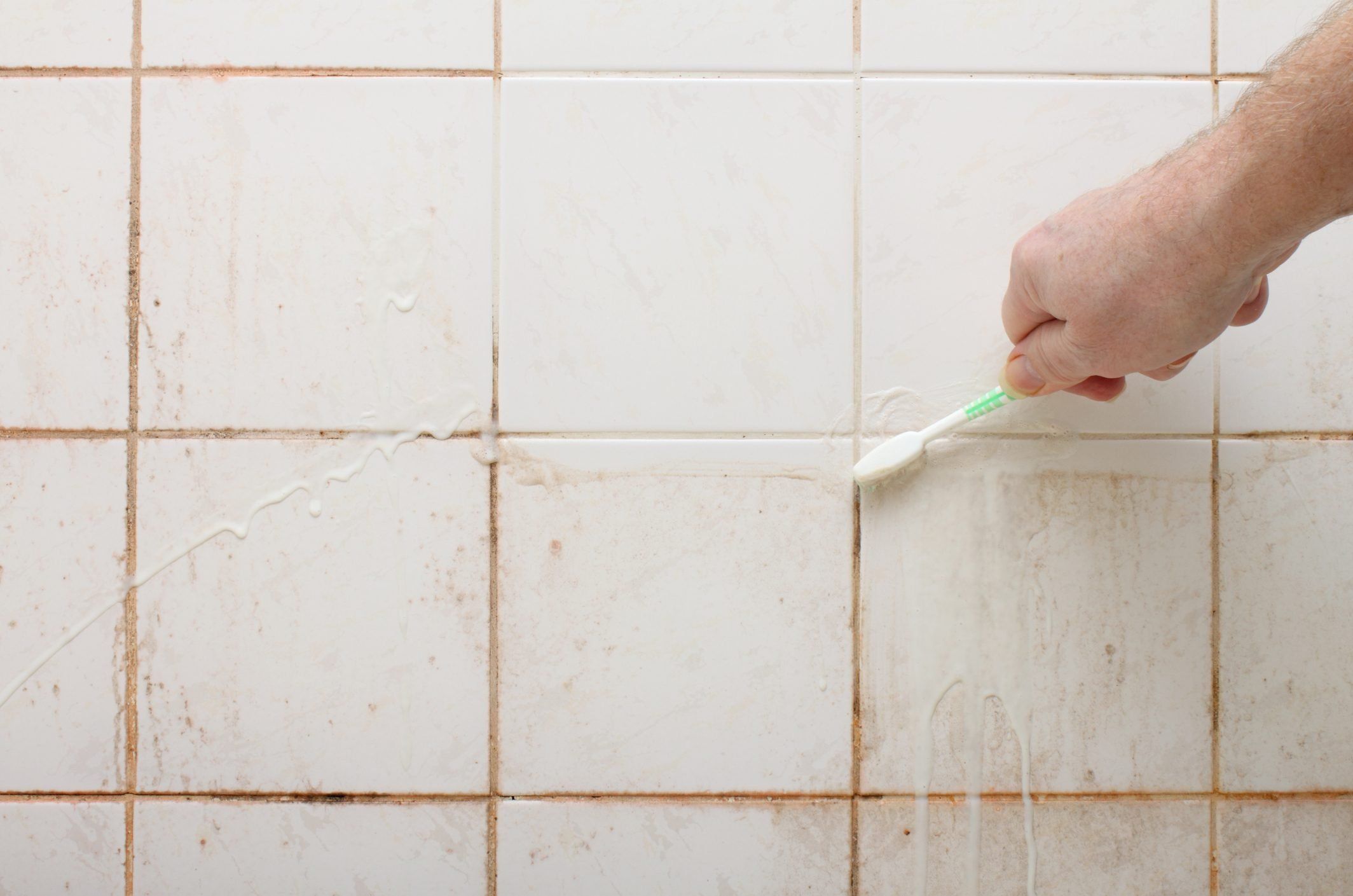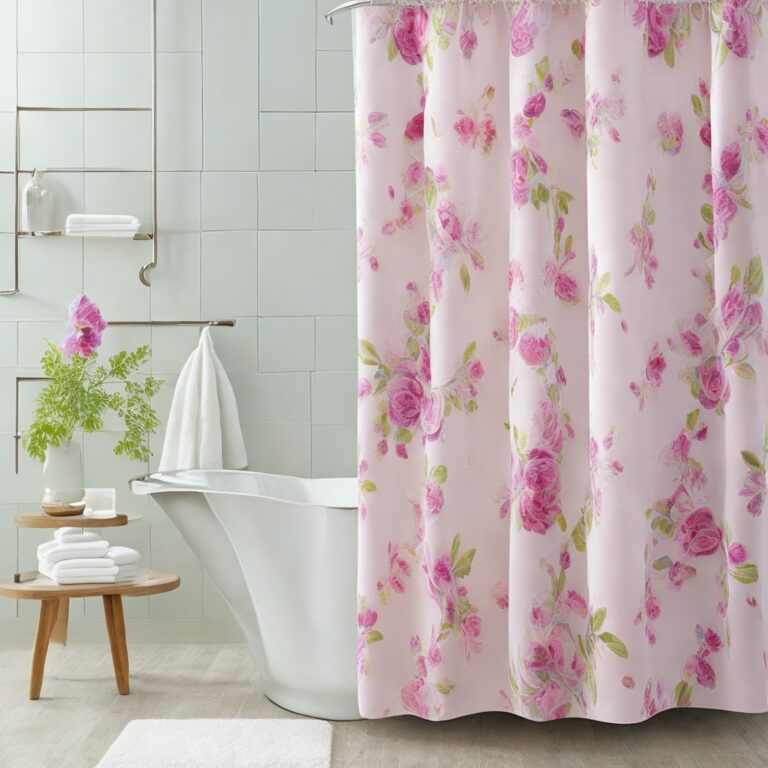How to get rid of pink mold in the shower(an easy guide from experts)
Pink mold, also known as the bacteria Serratia marcescens, is a notorious shower menace that can cause allergic reactions, respiratory problems, and even infections. This pinkish film thrives in damp and warm environments, making your shower a prime location for its growth. The worst part about it is that it can hide in hard-to-reach places, making it challenging for you to eradicate it completely.
In this article, we will provide you with detailed information on how to get rid of pink mold in the shower, why addressing this problem is crucial for your health, and what to expect in the subsequent sections of this guide. So, if you’re tired of scrubbing your shower endlessly and want a lasting solution to this pesky bacteria, read on!
What is Pink Mold?
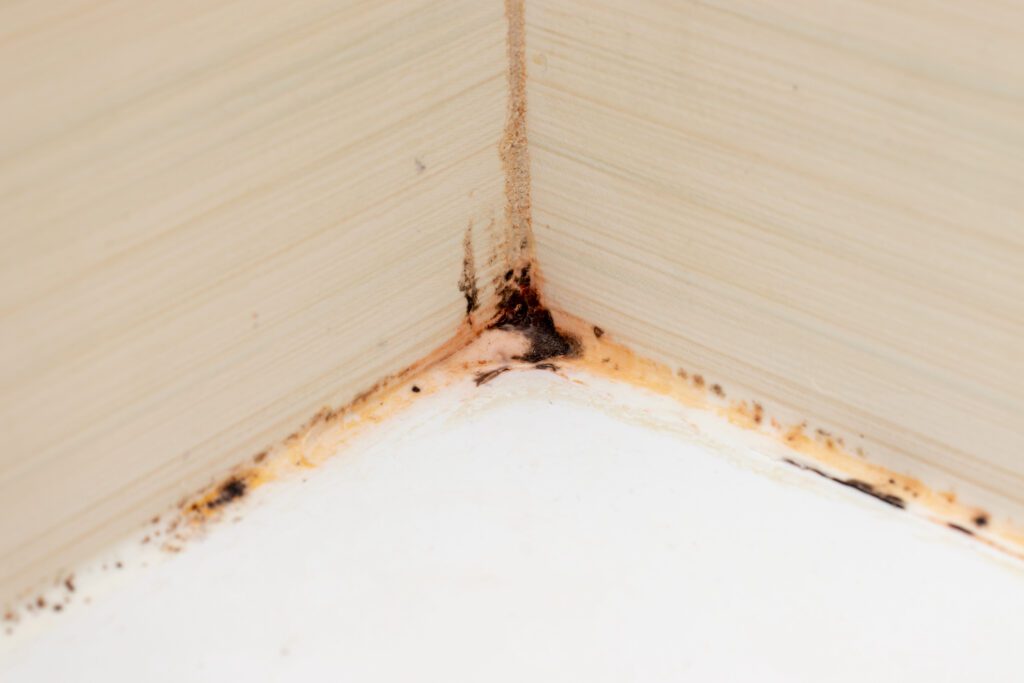
Pink mold, scientifically known as Serratia marcescens, is an airborne bacterium belonging to the Enterobacteriaceae family. Its name comes from its pink to reddish-orange colored film that grows on moist surfaces, primarily in damp environments, making showers a perfect breeding ground. This resilient bacterium can cause a range of health problems, including respiratory issues, allergies, and infections, making it vital to address pink mold growth in your shower.
There are two common types of pink mold found in showers, including Fusarium and Aureobasidium. Fusarium thrives best in high humidity and can cause eye and skin irritation, while Aureobasidium grows in dark and humid environments, causing allergies and respiratory problems. Excess moisture in the air, poorly ventilated bathrooms, and water leaks are the primary causes of pink mold growth. Addressing these issues is crucial in preventing the bacterium’s spread and ultimately avoiding potential health problems.
Recognizing Pink Mold Infestation
One of the biggest challenges in dealing with pink mold in the shower is recognizing that it’s there in the first place. While pink mold can certainly be hard to spot, the good news is that it’s not invisible. It’s easy to recognize pink mold through its distinctive appearance and texture. Pink mold typically appears as a thin, film-like layer on shower surfaces and grout lines.
When you run your finger over it, the pink mold feels slimy and somewhat grainy, almost like sand. Another key aspect of pink mold is its color. As the name suggests, pink mold is usually pink or reddish in hue, which sets it apart from other types of mold that may appear black, green, or gray.
Of course, not all mold in the shower is pink mold, and it’s important to be able to distinguish pink mold from other types of mold. One helpful way to do this is to pay attention to the color and texture of the mold. As we’ve noted, pink mold is typically pink or reddish in hue and has a slimy, grainy texture. Other types of mold may have a slightly different texture or color.
For example, black mold tends to be dark in color and has a fuzzy or slimy texture, while green mold is usually light green and may look fuzzy or powdery. By learning to recognize these subtle differences, you can more easily determine whether you’re dealing with pink mold or another type of mold in your shower.
Health Risks Associated with Pink Mold
Pink mold may seem harmless, but its impact on our health can be significant. Exposure to this bacteria can cause various respiratory problems such as coughing, wheezing, and shortness of breath, especially in individuals with pre-existing respiratory conditions. Moreover, prolonged and repeated exposure to pink mold can lead to more serious health issues such as lung infections, skin infections, and even sepsis.
This is because pink mold secretes a toxin that can weaken the immune system and cause harm to the body. Additionally, if you are allergic to pink mold, exposure to it can lead to allergic reactions such as itchiness, hives, and difficulty breathing. The dangers of pink mold should not be underestimated, and it is essential to take the necessary steps to prevent its growth and eliminate it as soon as possible.
Regular cleaning of the shower area is the first line of defense against pink mold. This involves wiping down the surfaces after every use and ensuring that there is no standing water left in the shower area. By doing so, you can reduce the likelihood of mold growth in these areas and prevent any related health risks. Pink mold may be a common problem in the shower, but it can pose a significant risk to our health. By taking adequate measures to address its growth and eliminate it as soon as possible, we can ensure that we are not exposing ourselves to any unnecessary health risks.
How to get rid of pink mold in the shower
Removing Pink Mold
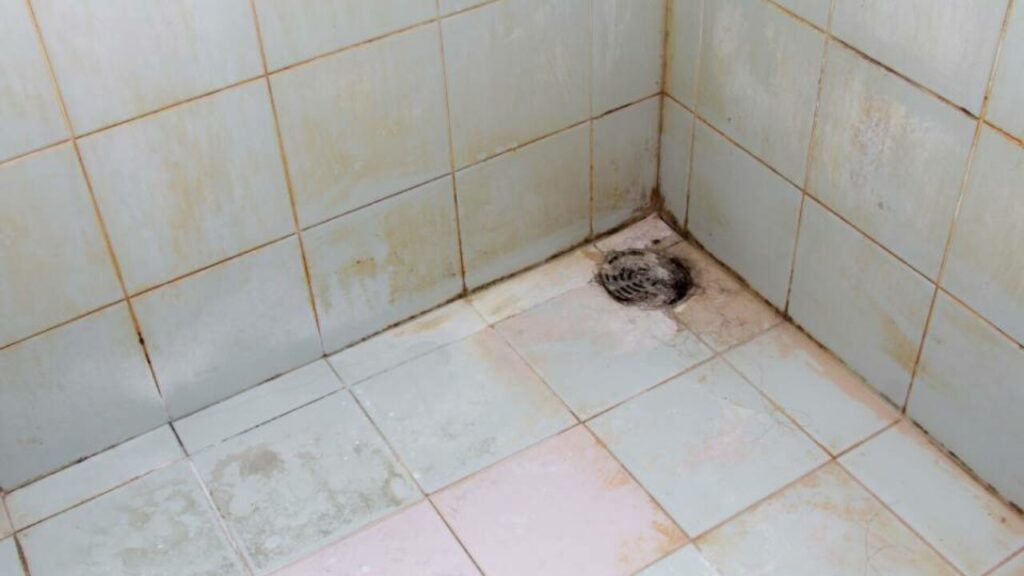
Pink mold, also known as the bacteria Serratia marcescens, is a notorious shower menace that can cause allergic reactions, respiratory problems, and even infections. This pinkish film thrives in damp and warm environments making your shower a prime location for its growth. Removing pink mold from your shower is essential to protect your health and ensure it doesn’t return.
Safety Precautions
When it comes to dealing with pink mold in your shower, taking safety precautions is crucial for protecting your health. One of the most important safety measures to implement is the use of personal protective equipment (PPE). This includes gloves and goggles, as pink mold can cause allergic reactions and respiratory problems. By wearing PPE, you can minimize exposure to harmful bacteria and prevent any potential health hazards.
Gather Supplies
Once you’ve taken the necessary safety precautions, it’s time to gather the supplies for removing pink mold. This involves selecting an appropriate cleaning agent and ensuring that you have all the necessary tools for scrubbing and wiping down the surfaces. For tackling pink mold, we recommend using a combination of white distilled vinegar and baking soda.
Preparing the Area
Once you’ve gathered your supplies, the next step is to prepare the area for cleaning. This involves removing any loose debris and wiping down all surfaces with a damp cloth. Doing so will help get rid of any dirt or grime that can cause pink mold to spread even further.
Mixing the Cleaning Solution
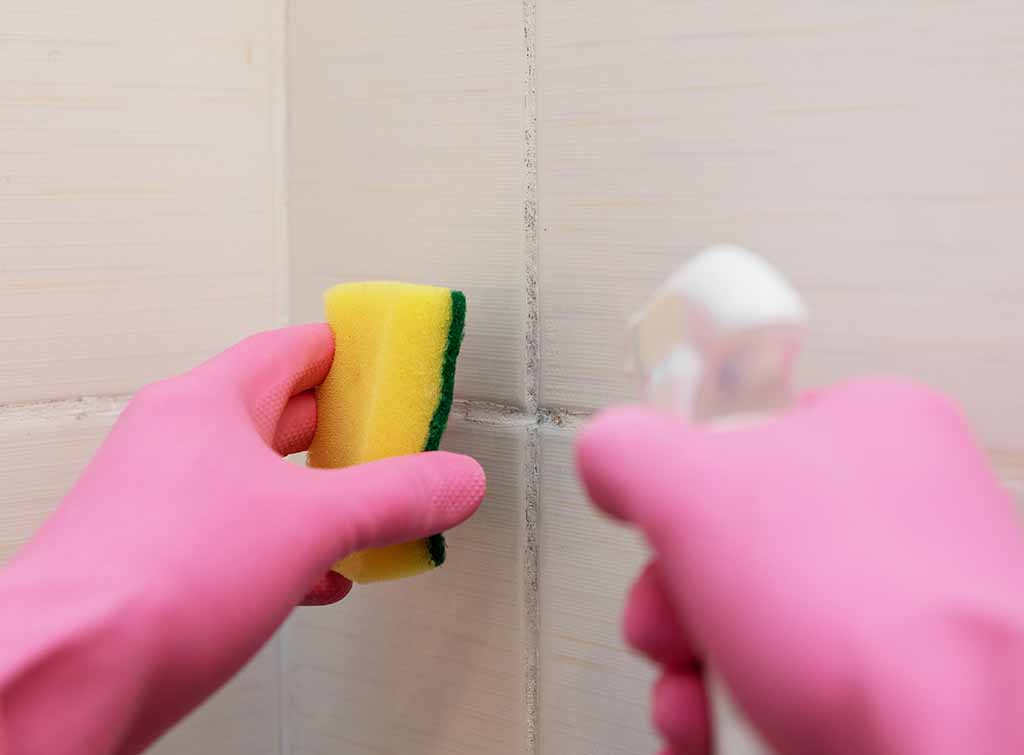
To make a homemade cleaning solution using vinegar and warm water, you will need two cups of white distilled vinegar and two quarts of warm water. Start by pouring the vinegar into a bucket or spray bottle and then adding in the warm water. Make sure to mix the solution thoroughly before using it. For extra effectiveness, you can also add a teaspoon of baking soda.
Applying the Cleaning Solution
After mixing the homemade cleaning solution of white distilled vinegar and hot water, fill a spray bottle with the mixture. Ensure that the spray bottle is filled completely to ensure that it will last for the duration of the cleaning process. For extra effectiveness, you can also add a teaspoon of baking soda to the mixture before pouring it into the spray bottle. Once the spray bottle is ready, lightly mist it onto the affected area and allow it to sit for 10-15 minutes before wiping it down with a damp cloth.
Scrubbing and Cleaning
Once you’ve allowed the cleaning solution to sit on the affected area for 10-15 minutes, it’s time to scrub and clean. Using a sponge, gently but firmly scrub down all surfaces where pink mold is present. The key here is to ensure that you are thoroughly cleaning all areas, not just the visible ones. After scrubbing the area, use a damp cloth to wipe down the surfaces and pick up any residue.
Rinsing and Drying
Once you have finished scrubbing and cleaning the affected areas, it is important to rinse them with clean water to ensure all residue is removed. This is especially important for any areas where there may have been standing water or dampness, as this can lead to an increase in mold growth if not rinsed properly. To ensure that the area is completely dry, use a towel or hand dryer to remove any excess water.
Disposing of Materials
Once you have finished cleaning and rinsing the affected area, it is important to properly dispose of all materials used during the process. This includes any sponges or cloths used for scrubbing as well as the container used for mixing the cleaning solution. It is also important to clean and disinfect any tools that were used in order to prevent cross-contamination.
Preventing Future Growth
The most important step in removing pink mold is preventing its growth in the future. This can be done by ensuring that all surfaces are wiped down after each use and that no standing water is left behind. Additionally, consider installing a dehumidifier to help reduce moisture levels in the bathroom as this will make it less conducive for mold growth.
Additional Tips
Pink mold is an unsightly and potentially dangerous problem, but it can be eliminated with the right techniques. In addition to what has been discussed above, here are some extra tips for getting rid of pink mold in your shower:
- Don’t forget to scrub any areas that may have been exposed to standing water, as this can encourage the growth of pink mold.
- For severe cases of pink mold, consider using a specialty cleaner designed specifically for this purpose.
- Once you have finished cleaning the affected area, use a fan or open window to help dry out the space more quickly.
- Check back periodically to ensure that the mold has not returned and take any necessary preventative measures if it does.
frequently asked questions
Can pink mold cause health issues?
Yes, pink mold can cause health issues. Although it is not actually a mold, but rather a type of bacteria called Serratia marcescens, it can still pose potential health risks. This bacteria thrives in damp and humid environments, such as bathrooms or kitchens, and often appears as a pink, slimy film on surfaces like shower curtains, tiles, and bathtubs.
Can I use bleach to remove pink mold?
Yes, bleach can be an effective way to remove pink mold from surfaces. However, it’s important to use it properly and safely as bleach is a strong chemical that can be hazardous if used incorrectly.
How often should I clean my shower to prevent pink mold?
To prevent the growth of pink mold in your shower, it is recommended to clean it at least once a week, wipe down the walls and floor with a squeegee after each use, use a mold and mildew-resistant shower curtain or liner, ensure good ventilation, and address any leaks or water damage promptly.
Is pink mold resistant to common cleaning products?
Pink mold can be resistant to some common cleaning products, especially if they are not used correctly or if the mold has been allowed to grow for an extended period of time. Mild soap and water may not be enough to fully eliminate pink mold from surfaces. However, there are several cleaning products that can be effective at removing pink mold, including bleach, hydrogen peroxide, and vinegar. Protective gear should be worn when using these products, and it’s important to adequately ventilate the area while cleaning.
Can pink mold grow in other areas of the bathroom?
Yes, pink mold can grow in other areas of the bathroom, such as on tiles and grout. Additionally, it can also form on surfaces that aren’t found in the shower, such as countertops and sinks.
What are the signs of a severe pink mold infestation?
The signs of a severe pink mold infestation include a prominent pink, slimy film on surfaces; an unpleasant odor in the air; and mold growth in other parts of the bathroom. If you notice any of these signs, it is important to take action immediately to prevent the spread of the bacteria.
Can pink mold come back after it has been removed?
Yes, pink mold can come back after it has been removed. This is why it is important to take preventative measures such as regularly cleaning and disinfecting the shower area, wiping down walls and floors with a squeegee after each use, and ensuring good ventilation in order to reduce the chances of further infestations.
How can I identify pink mold in my shower?
Pink mold typically appears as slimy patches or stains on shower surfaces. It can be found in corners, grout lines, caulking, and areas where water tends to accumulate. The distinctive pinkish-red or orange color is a clear indicator of pink mold growth.
What should I do if pink mold keeps reoccurring in my shower?
If pink mold keeps coming back, it might indicate an underlying issue. Check for any leaks, plumbing problems, or areas with excessive moisture. Addressing these issues, improving ventilation, and maintaining consistent cleaning practices will help prevent the recurrence of pink mold. Consider consulting a professional if the problem persists.
Can I use commercial mold cleaners to remove pink mold?
Yes, you can use commercial mold cleaners specifically designed to eliminate pink mold. Look for products that mention their effectiveness against bacteria and pink mold on the label. Follow the instructions provided by the manufacturer for the best results.
Are there any natural remedies to remove pink mold?
Yes, there are natural remedies that can be effective in removing pink mold. Vinegar is a popular option due to its antimicrobial properties. You can mix equal parts of vinegar and water in a spray bottle, apply it to the affected areas, and scrub with a brush. Baking soda, known for its cleaning and deodorizing properties, can be added to the vinegar solution for added effectiveness.
How can I prevent pink mold from growing on shower curtains?
To prevent pink mold on shower curtains, opt for mold-resistant or mildew-resistant shower curtains made of materials like nylon or polyester. Ensure that the curtain is properly dried after each use. You can also periodically wash the shower curtain according to the manufacturer’s instructions to remove any buildup of soap scum or moisture.
Conclusion
Pink mold is an unsightly and potentially dangerous problem, but it can be eliminated with the right techniques. From safety precautions to gathering supplies to preparing the area for cleaning, these steps will help you in removing pink mold from your shower. Taking preventative measures such as wiping down all surfaces after each use and installing a dehumidifier is essential for preventing future growth of this nuisance. With the right knowledge and tools, you can keep your bathroom clean and free of pink mold!

